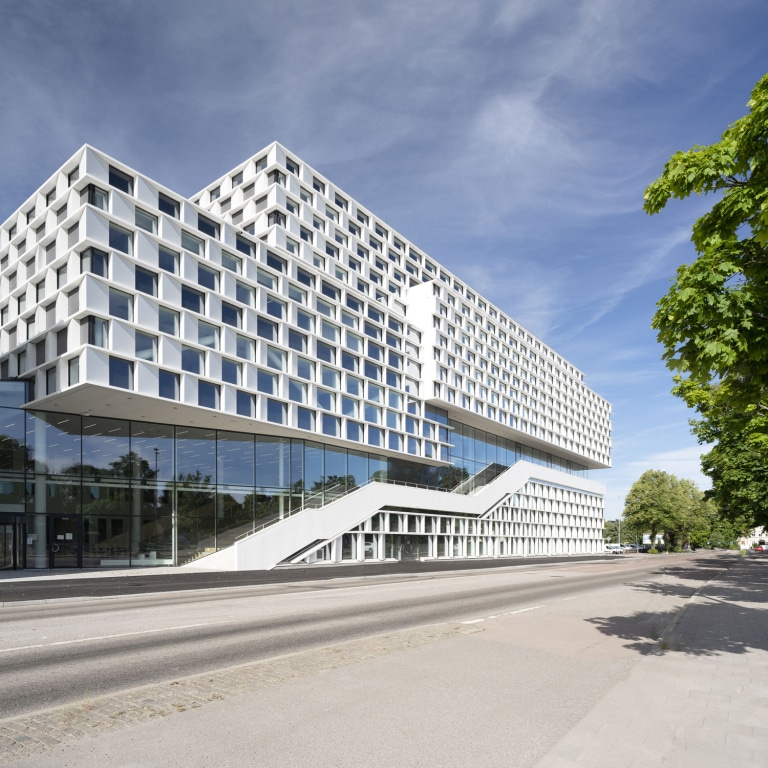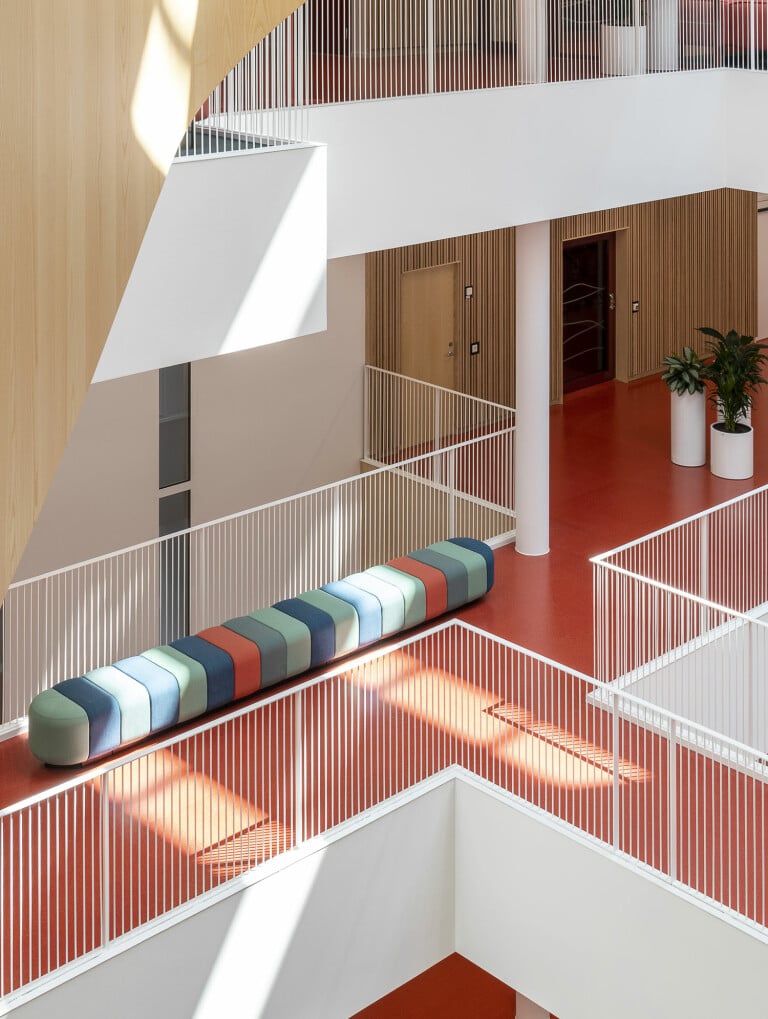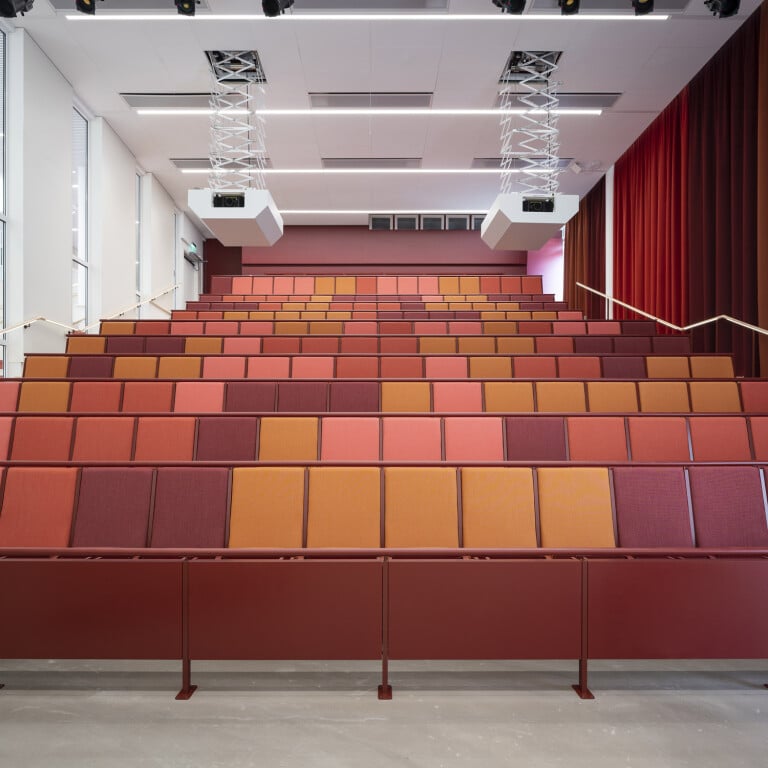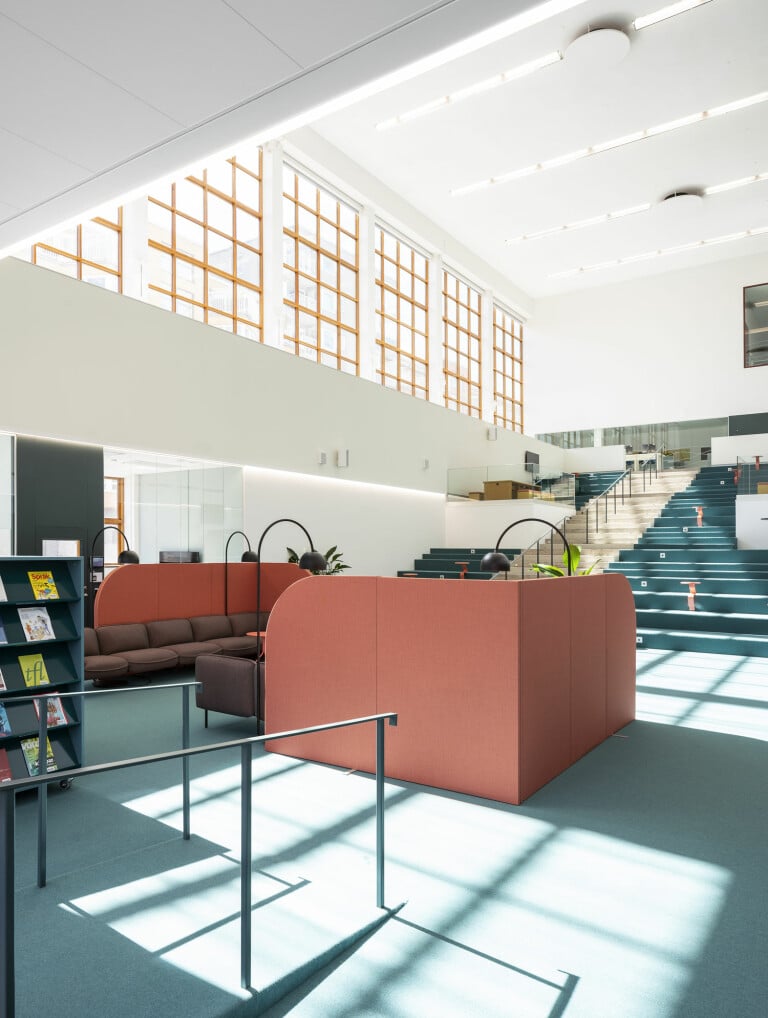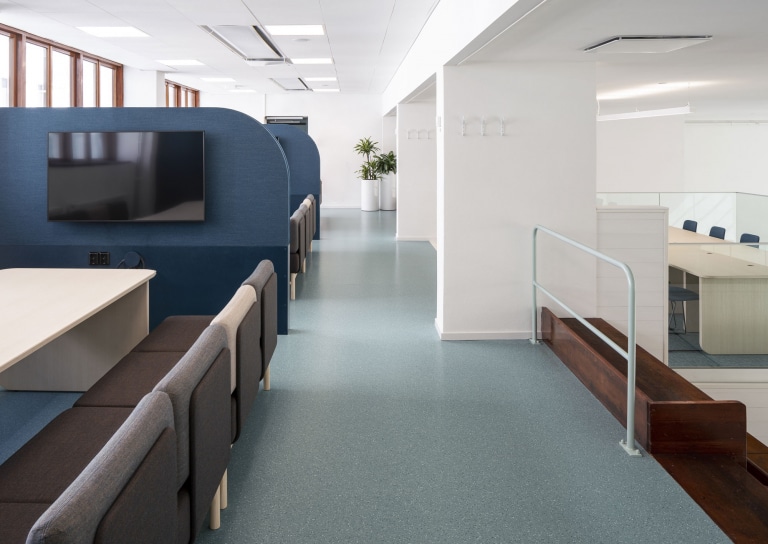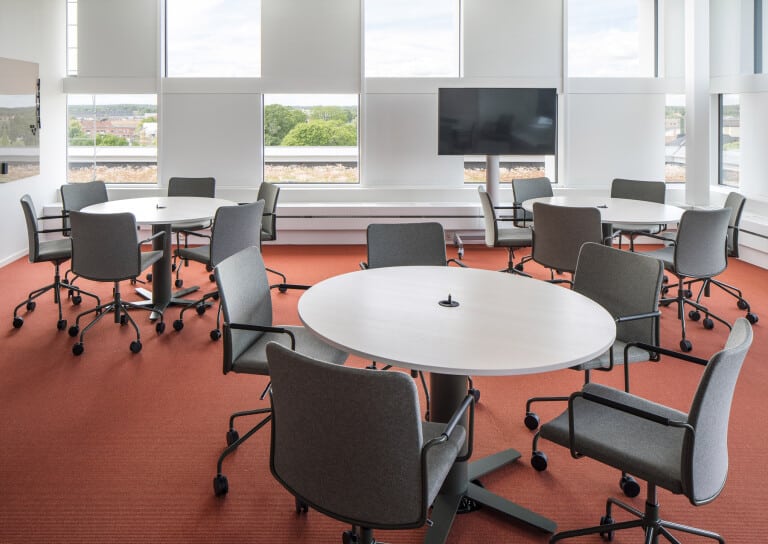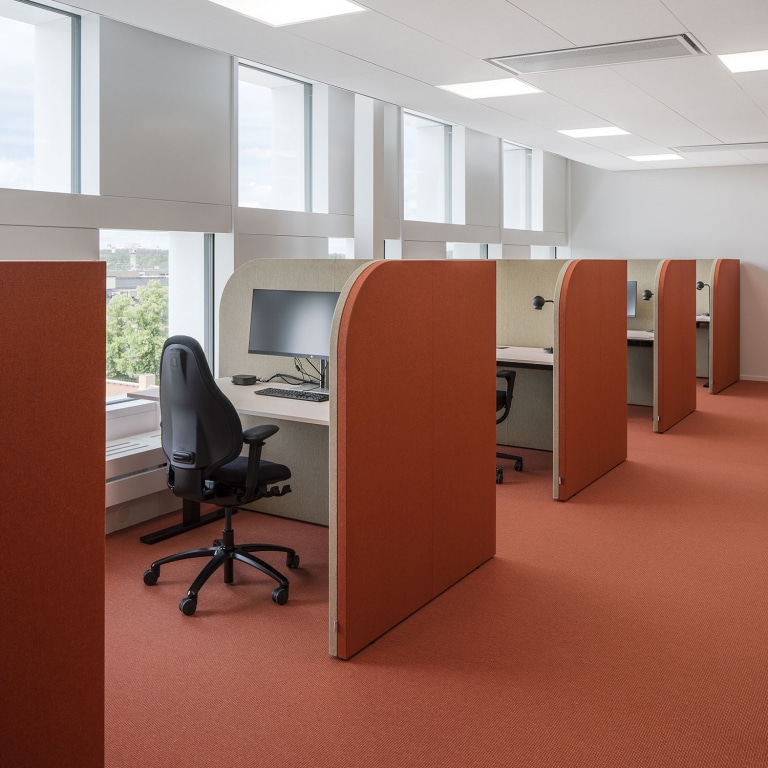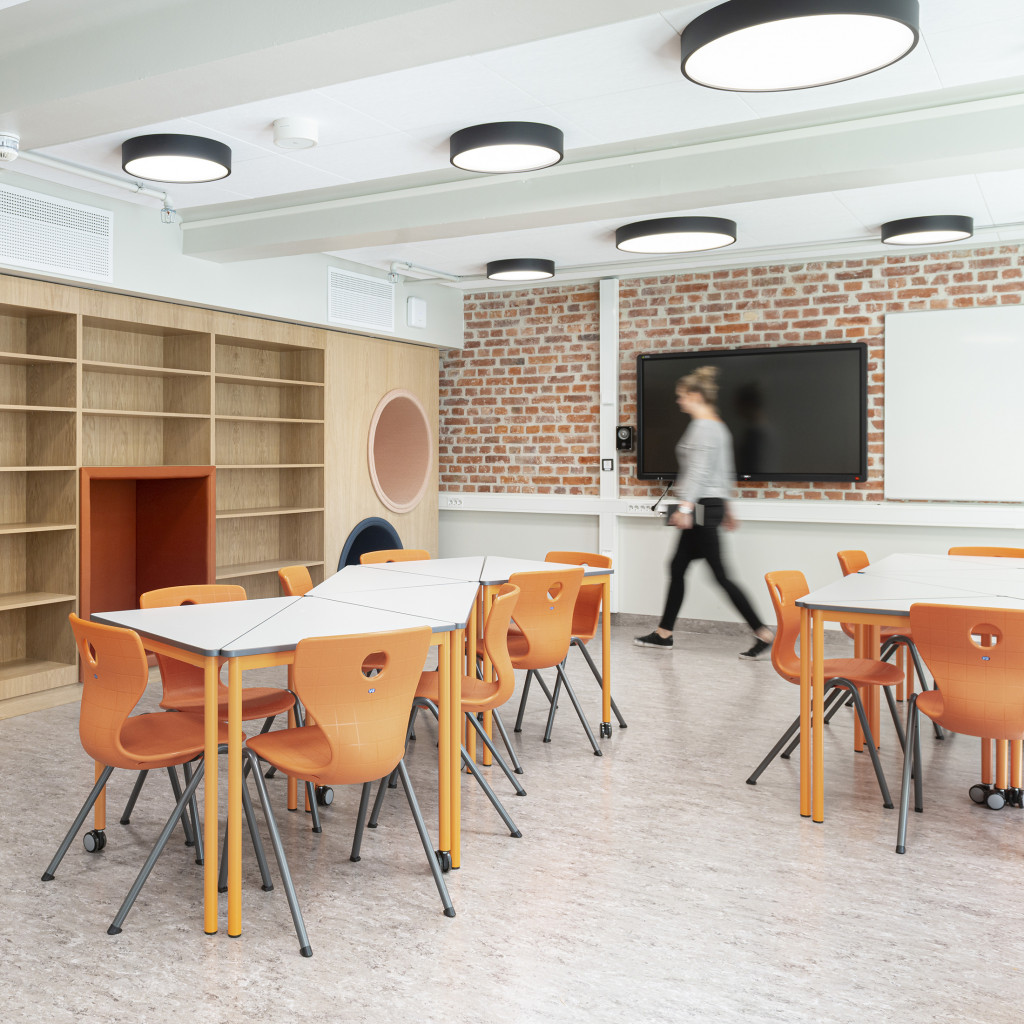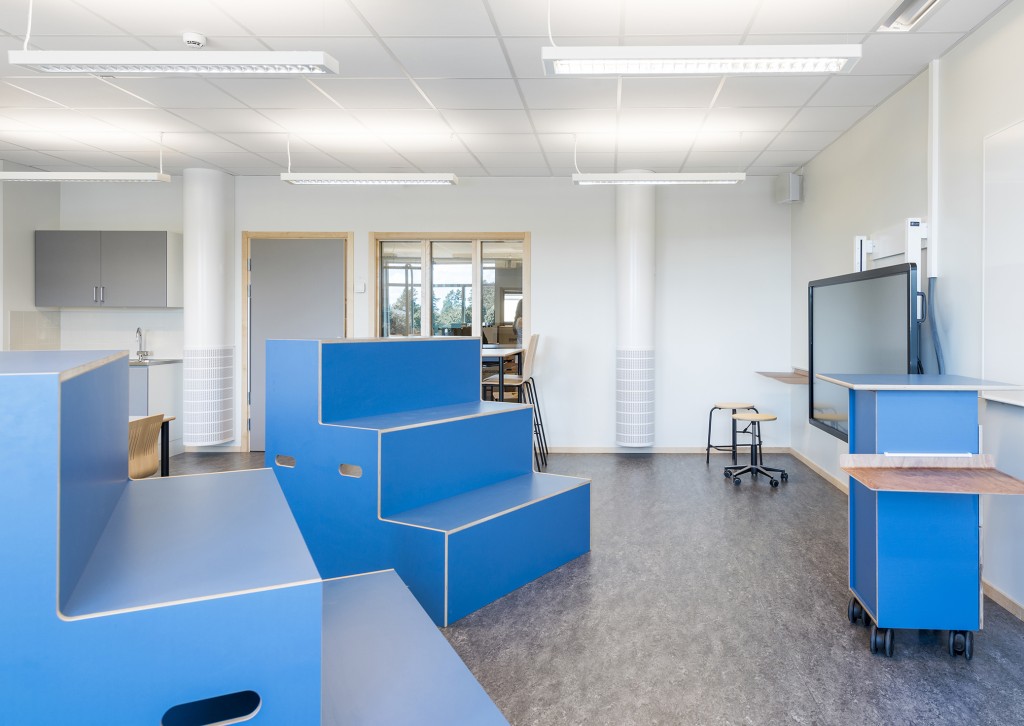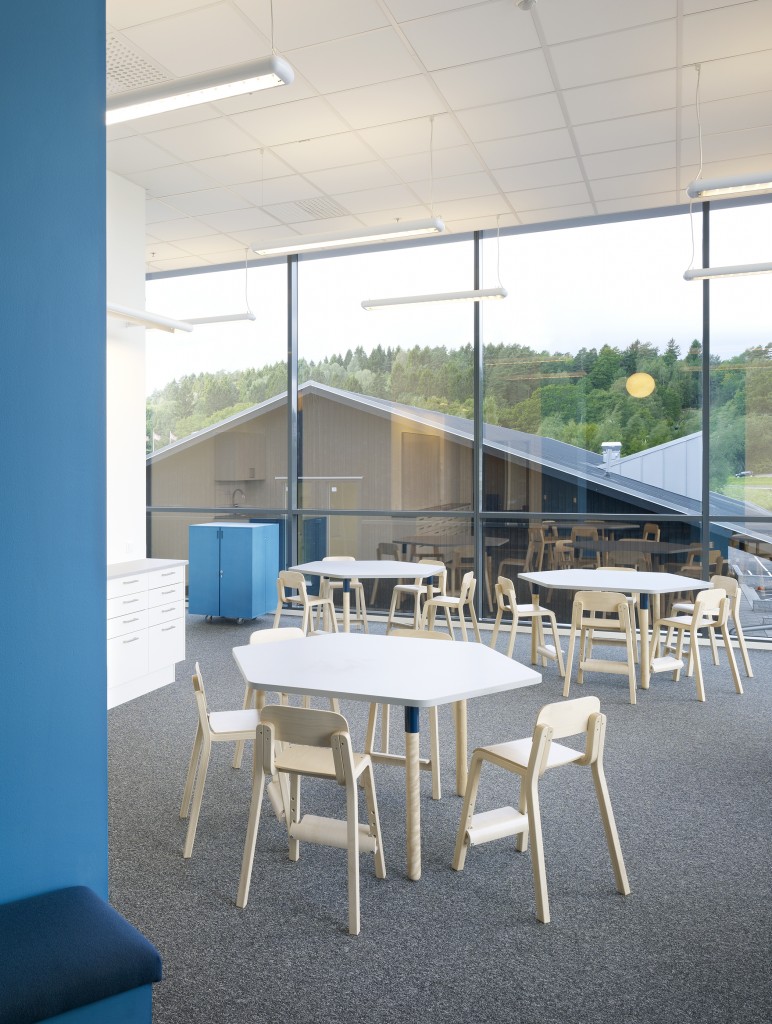Campus Eskilstuna













A new landmark for the city, but also a new meeting place for around 4,000 students and 300 staff. Mälardalen University in Eskilstuna has concentrated its activities at a new campus that has drawn inspiration from the city’s heritage and its surroundings.
Campus Eskilstuna is a six-storey, 20,000 m² new build that has been designed by Danish architects 3XN. The glazed façade connects to a renovated and listed public baths, designed by Paul Hedqvist in 1933. This section of the campus, which now houses a library, has retained a sense of the old baths.
“On the lowest level of the older building, you can stand in what was once the bottom of the swimming pool. From there, a large staircase leads up to the second floor, where the edge of the pool has been retained. We have used turquoise textile flooring for the library floor and the staircase. This particular colour scheme was inspired by the Eskilstuna River, which runs through the city,” says Annika Askerblom, who, together with Heli Vauhkala at AIX Architects, was responsible for the overall interior configuration of Campus Eskilstuna.
A second colour scheme has drawn inspiration from the local area and Eskilstuna’s past as an industrial city, with its many charming 19th-century brick buildings, some of which previously housed a number of Mälardalen University’s activities. The variation in the shades of brick, from a dark iron oxide red to the lightest pale pink, have been incorporated into the furnishings and features heavily in the floor colours used throughout the project.
A meeting point
The university’s various learning environments were previously spread out around the city. To create greater cohesion and a clear symbol for Mälardalen University, the brief was to gather all activities in one location. An important element of the process involved maintaining the students’ sense of proximity to one another and to the teaching staff.
“The six storeys of the building all connect to atriums, which creates a bright, open atmosphere. No matter what floor you are on, you always have an overview of the building. This provides a space for students and teaching staff to meet and engage with one another,” says Heli Vauhkala.
Campus Eskilstuna is a warm site with rich colour schemes and a wealth of detail, much of which is provided by the many special joinery components incorporated into the project. The glazed and clad façade is balanced internally by elements of wood, predominantly ash, that are used in key features and which help to create a harmonious impression.
Active premises
On the upper floors there are activity-based office areas with a slightly lower ceiling height than the 3.40 metres boasted by the educational level. Here textiles help to create a calm and cosy work environment. The students’ traditional learning environments have also been challenged and influenced by new ideas. Classic auditoriums and classrooms are combined with Active Learning Classrooms, which are environments designed to support more active learning, where students can work in groups, discussing one another’s work and conclusions.
“It was our teaching staff who asked for Active Learning Classrooms. They needed lecture rooms adapted for teaching methods that stimulate students and boost learning,” says Anna Gulyas, Mälardalen University’s project manager. Her colleague Linda Redebrandt works as a premises planner and is especially pleased with the resulting student workspaces and study areas.
“It feels really good to know that the interior furnishings and equipment work and are being used as we intended. We have a large student body with a wide range of expectations. Seeing them thrive makes us happy.”
A timeless marker
Input interior has supplied the majority of the furniture for Campus Eskilstuna. Joakim Råberg, who was responsible for the project, describes the interior furnishings as harmonious and, more importantly, as of a high quality.
“This project achieves an impressive standard. A large proportion of the furnishings are locally produced and use high-quality, sustainable materials. These are not throw-away items, but ones that will stand the test of time. It’s a project that the entire city can be proud of.”
Annika Askerblom and Heli Vauhkala, from AIX Architects, agree that the project delivers in terms of quality and that Campus Eskilstuna serves as a symbol for the city.
“With its wealth of detail and the care that has been taken with regards to the choice of furnishings and materials, Campus Eskilstuna will retain a contemporary feel for many years to come. Its links to the site and the history of the city make it timeless, although buildings of this type always provide a snapshot of our time.”
